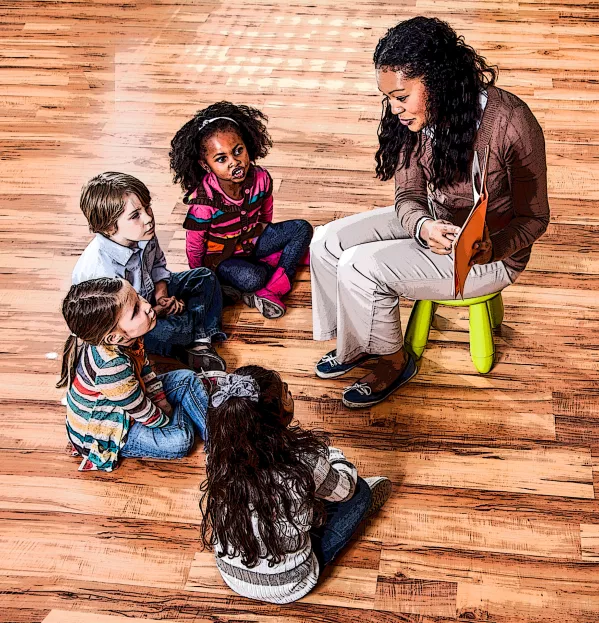It’s one of the most familiar sights in English schools: a class gathered on the carpet ready for story time. It’s an important activity, but research on supporting young children’s language development suggests that it could do with some adjustment.
Engaging story times are an important way to introduce children to high-quality literature, and many children’s books provide rich language models. A story like The Tiger Who Came to Tea may seem simple at first glance. But, as Kate Nation explained in Tes, picture books like this “are written in a deeper, more complex language than you might have thought”. They are an excellent way to model rich vocabulary and grammar.
However, if children are sitting in silence, demonstrating good looking and good listening, their opportunities for learning language are limited.
In early years foundation stage (EYFS) settings, much of what we say is already quite limited. We do a lot of instructional talk: “Can you come over here?”, “Let’s put our coats on”, “Does anyone want a snack now?”
More from Julian Grenier:
When we use a restricted language code like this, and just talk about what is in front of us, the children do the same.
As a result, they may not develop more complex language, like talking imaginatively about what might happen in the future, or thinking aloud with another person. This is known as sustained shared thinking, and the evidence suggests that this type of talk is highly beneficial to children’s early development.
Literacy: making the most of story time in schools
Story time can be a great opportunity to embed this thinking, and research suggests that small groups of three to five offer a richer context for children.
The evidence to support this practice goes back decades. In 1990, Morrow and Smith found that “reading to children in small groups appears to offer as much interaction as one-to-one readings, and (surprisingly) appears to lead to greater comprehension than whole-class or even one-to-one readings”.
In these small groups, children benefit when the book is used as a focus for conversation. We might talk together about what’s happening in the picture, or speculate on how we would feel if the tiger drank our kitchen tap dry.
Allowing the children to direct the focus of the conversation is important. As adults, we might gently guide the discussion, to keep a focus, but we might also ask a few questions to get children talking, or expand on what they say to provide a positive language model.
Perhaps the richest types of interactions happen when we listen carefully to what children say, and reply contingently. Contingent responses build on our knowledge of the child, and on what they say to us. We might say something like, “The character likes having his hair cut - do you like it, too? Didn’t you go to the barber’s last week?”
It is undoubtedly tricky to manage staffing so that children have regular times in small groups to share and talk about stories. However, if we are serious about prioritising children’s language and communication, shared-book sessions in small groups should become just as common as whole-class story time.
Dr Julian Grenier is the headteacher of Sheringham Nursery School and Children’s Centre. He co-leads the East London Research School.
With thanks to Dr Sandra Mathers from the University of Oxford School of Education.




